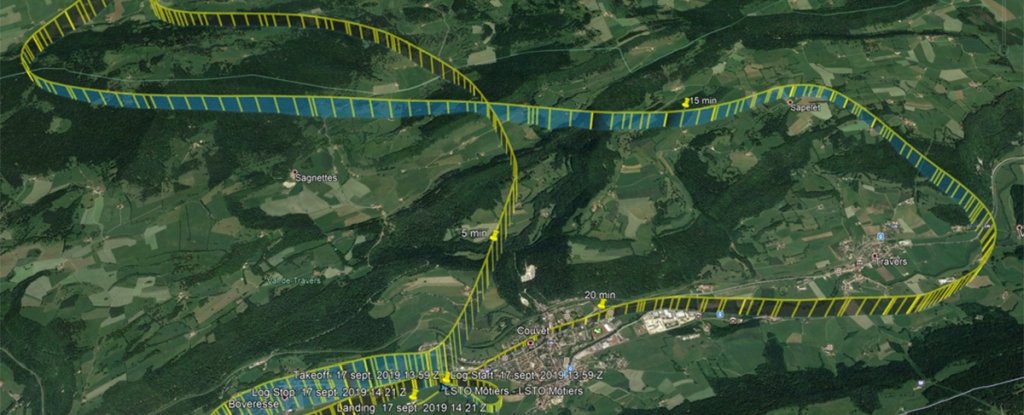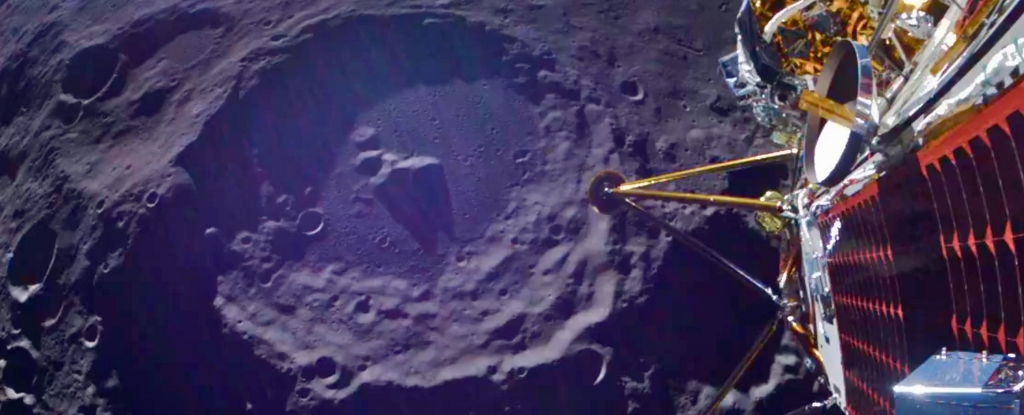Hold up your hands in front of your face. For most people, they will be mirrored copies of each other: You can hold them palm-to-palm and they will match up, but you cannot superimpose them.
Molecules also exhibit this handedness, or chirality. They come structured in two mirrored, non-superimposable forms. And it’s a fascinating quirk of life that almost all biomolecules will only work in one of their two forms.
Natural amino acids – the building blocks of proteins – are almost always left-handed, or sinistral. Natural sugars like those that make up RNA and DNA, on the other hand, are almost always right-handed, or dextral. If you replace any of these molecules with the other form, the whole system breaks down.
This quirk is called homochirality. We’re not sure why it happens, but it’s thought to be a key property of life. And back in 2021, scientists detected molecular homochirality from a helicopter flying at a velocity of 70 kilometers per hour (43.5 mph) at an altitude of 2 kilometers (1.2 miles).
Why would they do such a thing, you ask? To see if we can detect molecular homochirality on other planets, in the search for extraterrestrial life.
Even here on Earth being able to measure this signal from altitude would be useful, since it can reveal information about the health of plants.
“When light is reflected by biological matter, a part of the light’s electromagnetic waves will travel in either clockwise or counterclockwise spirals,” explained physicist Lucas Patty of the University of Bern in Switzerland in June 2021.
“This phenomenon is called circular polarization and is caused by the biological matter’s homochirality. Similar spirals of light are not produced by abiotic non-living nature.”
As you might expect, however, this signal is extremely faint. The circular polarization of vegetation makes up less than 1 percent of the light reflected.
One type of instrument that can detect the signal of polarized light is called a spectropolarimeter, which uses special sensors to separate the polarized fraction.
For several years, Patty and his team have been working on a highly sensitive spectropolarimeter for detecting the circular polarization of vegetation. Called TreePol, it could positively detect circular polarization from several kilometers away.
Then, they adapted TreePol for flight, with upgraded spectrographs and added temperature control for the optics. This new design is called FlyPol.
When Patty and his team took to the air above Val-de-Travers and Le Locle in Switzerland with FlyPol, the improvement offered by these upgrades became immediately apparent.
“The significant advance is that these measurements have been performed in a platform that was moving, vibrating and that we still detected these biosignatures in a matter of seconds,” said astronomer Jonas Kühn of the University of Bern, and the MERMOZ project (Monitoring planEtary suRfaces with Modern pOlarimetric characteriZation).
It wasn’t just that FlyPol could isolate the circular polarization signal and differentiate it from abiotic surfaces, such as asphalt roads. The team could use it to differentiate between various types of vegetation, such as grass, forests and even algae in lakes – all from a fast-moving helicopter.
This could open up a whole new way to monitor the health of various vegetative ecosystems, and maybe even coral reefs, the researchers said. But they’re not done refining it yet. They want to take it to a velocity of roughly 27,580 km/h and an altitude of 400 kilometers – low Earth orbit.
“The next step we hope to take is to perform similar detections from the International Space Station (ISS), looking down at the Earth,” said astrophysicist Brice-Olivier Demory of the University of Bern and MERMOZ.
At that altitude, the resolution wouldn’t be as fine – maybe 6 to 7 kilometers – but it will be able to help the researchers refine their spectropolarimeter, and see how well it works on more extreme scales.
“That will allow us to assess the detectability of planetary-scale biosignatures. This step will be decisive to enable the search for life in and beyond our Solar System using polarization,” Demory said.
The research has been published in Astronomy & Astrophysics.
A version of this article was first published in June 2021.





